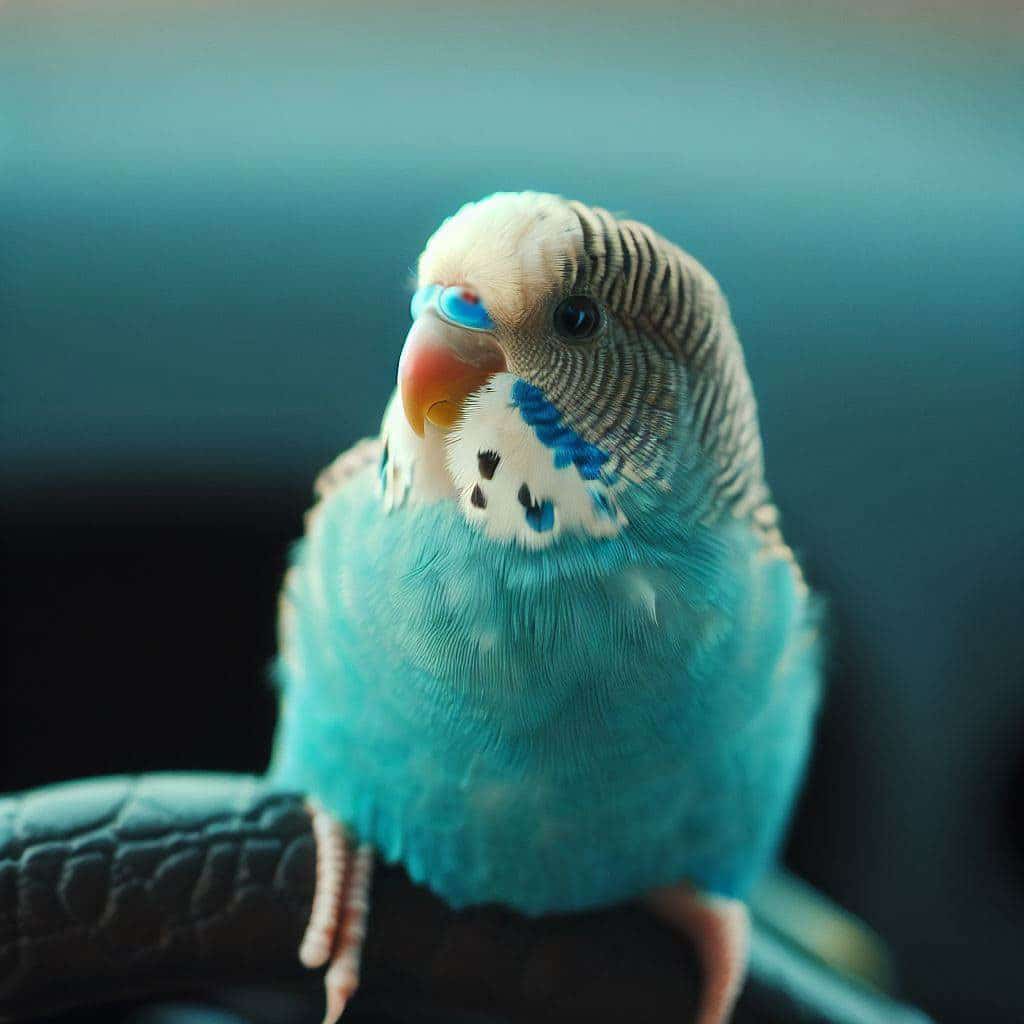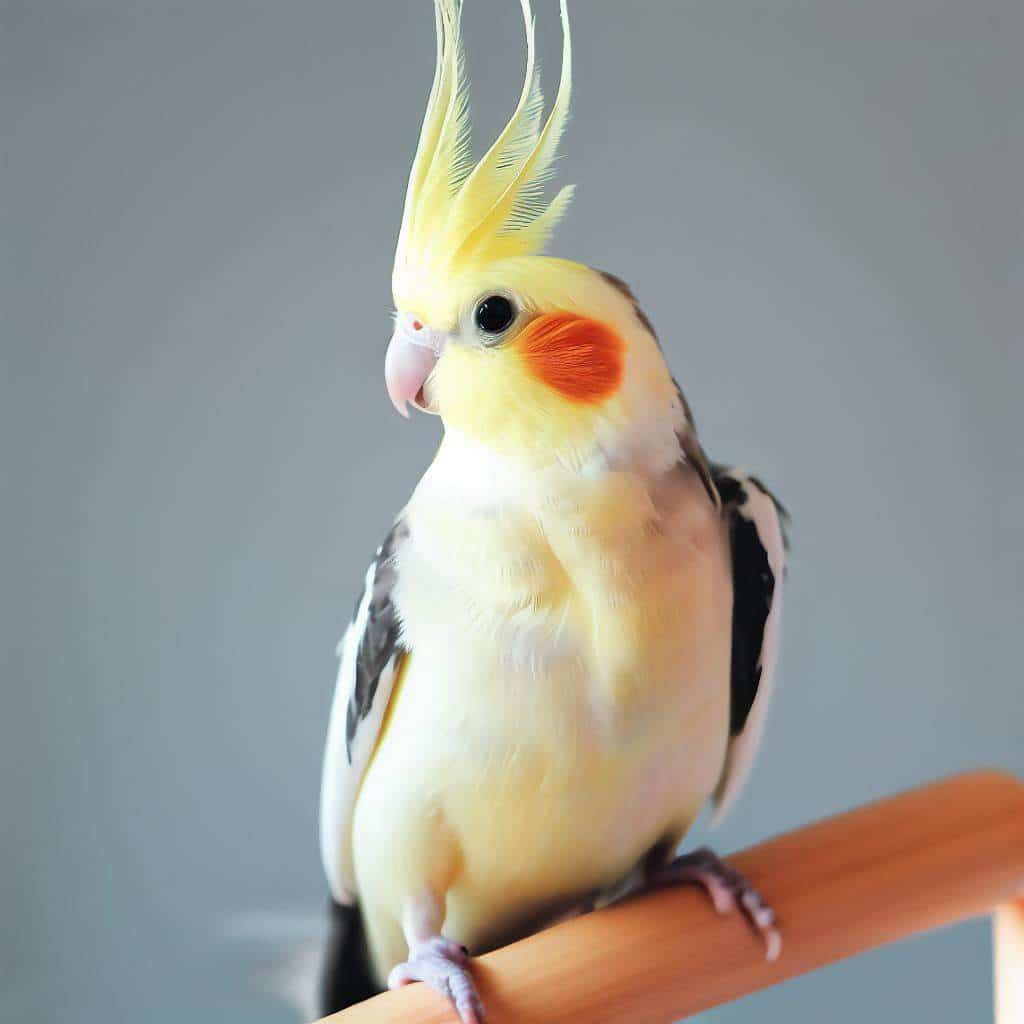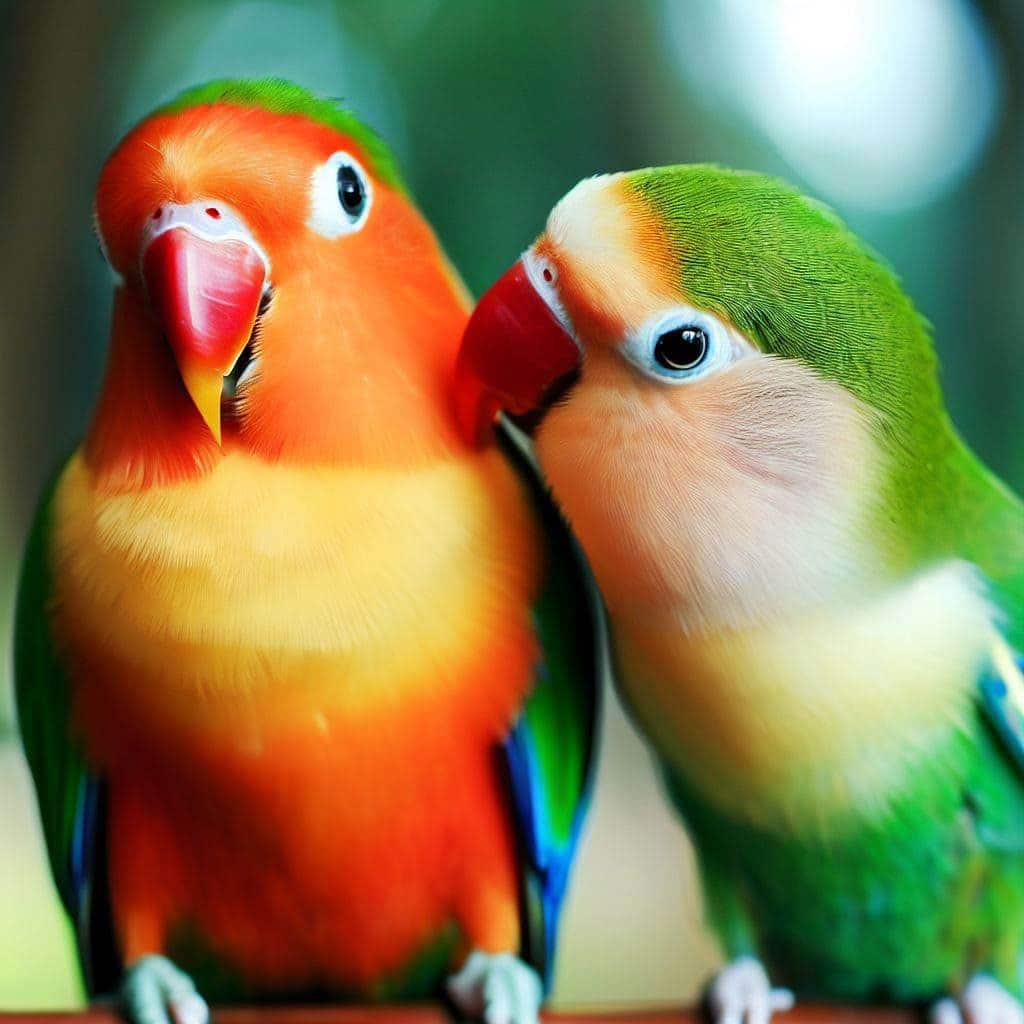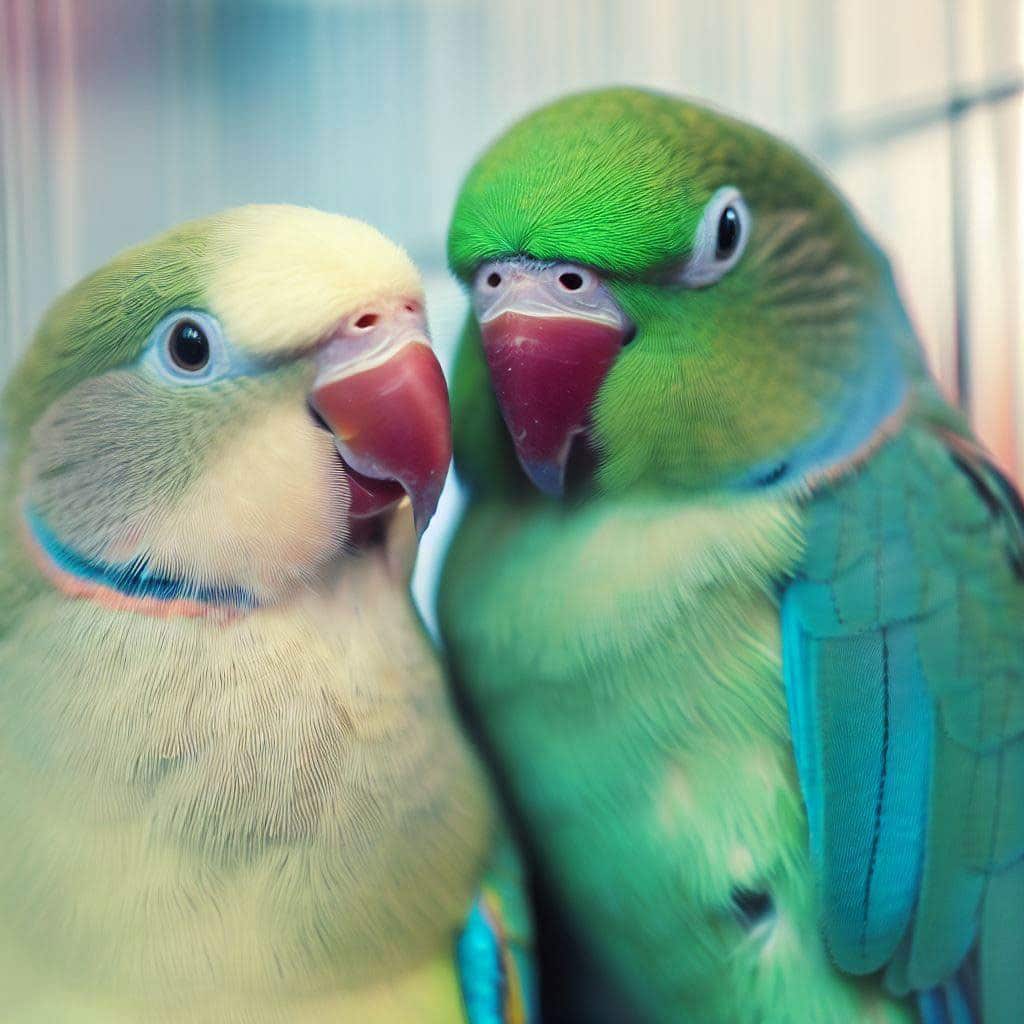What Are The Best Birds for Pets?
Ah, the allure of our feathered friends! Birds have captivated the human spirit for generations…
Table of Contents
Introduction:
Ah, the allure of our feathered friends! Birds have captivated the human spirit for generations, but are they the right pet for you? Dive with us into the world of avian wonders and discover the joys and responsibilities of bird ownership to highlight the best birds for pets.
Overview of the Joys and Responsibilities of Bird Ownership
Imagine waking up every morning to the melodious chirping of a canary or watching a parrot mimic your laughter. Birds often add a unique charm and vivacity to our lives. Their brilliant plumage, social nature, and diverse personalities bring a slice of the wild into our urban settings. But as with all beautiful things, owning a bird isn’t just about enjoying its song or admiring its colors; it comes with its own set of joys and responsibilities.
Joys of Bird Ownership:
- Harmonious Companionship: Birds, especially species like budgies and cockatiels, are incredibly social. They can bond deeply with their human companions, offering a source of comfort and joy. Their interactive antics, from head bobs to playful nibbles, never fail to entertain.
- Educational Experience: Birds, being one of the best pets for nature enthusiasts, can open a window to the fascinating world of avian behavior and physiology. Observing their daily routines, from preening to nesting, provides valuable insights into their natural instincts and behaviors.
- Vocal Marvel: The ability of some birds, notably parrots, to mimic sounds is unparalleled. Their vocal performances, be it mimicking human speech or singing, can be both amusing and melodious.
However, as you bask in these joys, don’t forget the responsibilities that come with them. A pet bird isn’t just a decorative addition to your living room; it’s a living being with specific needs.
Responsibilities of Bird Ownership:
- Habitat Maintenance: Your feathered friend’s cage needs regular cleaning to ensure a healthy environment. This means changing the water, removing waste, and ensuring the cage remains a safe haven.
- Dietary Needs: Birds require a balanced diet to remain healthy. This often means a mix of seeds, fruits, and specially formulated bird food. Additionally, some birds have specific dietary requirements that you must cater to.
- Mental and Physical Stimulation: Just like you need exercise and entertainment, so does your bird. Toys, interactions, and even training sessions are crucial to keeping your bird mentally stimulated and physically active.
Brief Mention of the Factors that Make Some Birds More Suited for Pet Ownership
Not all birds are created equal, at least when it comes to pet ownership. Some species are more domesticated and better suited for the home environment. So, what makes certain birds to qualify as one the best birds as a pet?
- Size and Space: Larger birds, like macaws, require spacious cages and often a dedicated room. On the other hand, smaller birds like finches or canaries can comfortably thrive in more compact spaces.
- Noise Level: While the singing of a canary might be melodious, the loud squawks of certain parrots might not be everyone’s cup of tea, especially if you live in an apartment.
- Temperament: Birds like budgies and lovebirds are sociable and easier to tame, making them ideal for families. Conversely, some species might be more independent or even aggressive.
- Lifespan: Birds, surprisingly, can have long lifespans. Some parrots live up to 50 years! You need to consider if you’re ready for such a long-term commitment.
- Example: The African Grey Parrot is a marvel of intelligence and can mimic sounds incredibly well. However, it requires a lot of mental stimulation, a spacious environment, and has a long lifespan. Contrast this with a budgie, which is smaller, easier to care for, and has a shorter lifespan, making it one of the best birds for beginners.
While the allure of bird ownership is undeniable, it’s essential to understand both its joys and responsibilities. By choosing one of these best birds for pets suited to your lifestyle, you’ll ensure a harmonious relationship with your feathered companion.

Why Birds Make Wonderful Pets
Birds flutter into our lives with vibrant colors, captivating songs, and playful antics. But what makes them some of the best pets? Let’s delve deeper into the heart of avian allure.
Interactive and Social Nature of Birds
When you think of interactive pets, dogs or cats might first come to mind. But birds, with their keen intelligence and curious nature, often rank among the most engaging companions. Many bird species thrive on interaction, both with their kind and with their human caretakers.
Take parrots, for example. These clever creatures have an innate ability to pick up on human speech patterns, often mimicking words or phrases they hear frequently. Imagine coming home after a long day to be greeted with a cheerful “Hello!” from your feathered friend. It’s not just about mimicry; it’s about connection. Birds, especially parrots like cockatiels or African Greys, can form deep bonds with their owners. They’ll often seek out affection, perching on your shoulder or nuzzling against your cheek.
Moreover, some birds are incredibly social within their own species. Budgies or lovebirds, often hailed as some of the best birds for pets for beginners, enjoy the company of their kind. It’s heartwarming to watch them communicate, preen each other, or simply share a perch.
The Benefits of Bird Song and Chirping for Mental Well-being
Nature’s symphony often features the mesmerizing chirps and songs of birds. When these melodies find their way into our homes, they can have a profound impact on our mental well-being.
Bird songs are more than just delightful to the ear; they’re therapeutic. Studies have shown that natural sounds, including bird chirping, can reduce stress and anxiety. The gentle cooing of a dove or the intricate song of a canary can act as a natural stress-reliever, grounding us and connecting us to nature, even in the heart of a bustling city.
If you’re seeking a companion that offers both visual and auditory beauty, look no further than birds like the canary or finch. Their melodious tunes have often been associated with a serene and calming atmosphere, making them some of the best birds for pets, especially for individuals looking to bring a slice of tranquility into their homes.
Low Maintenance Compared to Larger Pets (with Proper Care)
While no pet is truly “low maintenance,” birds, when cared for correctly, can be less demanding than some larger pets. This makes them ideal for individuals with busier lifestyles or those living in more compact spaces.
Firstly, birds don’t require daily walks like dogs. A well-set-up cage or aviary, fitted with toys and perches, can provide much of their physical exercise needs. Dietary requirements, while specific to birds, are straightforward. A balanced mix of seeds, pellets, and fresh fruits or veggies often suffices.
Secondly, grooming demands are minimal. Most birds will preen themselves, and some, like the lovebird or parrotlet, love to bathe in shallow water dishes placed in their cages.
Lastly, birds are space-efficient. For those living in apartments, a bird can be a fantastic companion without the need for a yard or outdoor space. Even larger birds, such as parrots, require less space overall than a medium or large dog would.
Example: Consider the budgie. This small, cheerful bird needs a cage large enough to fly short distances, a balanced diet, and some toys and interaction. Contrast this with a dog that needs space to run, daily walks, and frequent grooming sessions. It becomes evident why many regard budgies as some of the best birds for pets, especially for urban dwellers.
In essence, birds bring a delightful blend of interaction, music, and manageable care requirements to the table. Their vivid presence, coupled with their simpler demands, reinforces why they stand tall (or fly high) as some of the best birds for pets. Whether you’re looking for a vibrant companion or a soothing songster, the avian world awaits your discovery.
Factors to Consider Before Adopting a Bird
Deciding to bring a bird into your home isn’t just about which species sings the prettiest song or has the most vibrant plumage. As with all pets, understanding the needs and characteristics of different bird species is crucial. So, before you set your heart on what may seem like the best bird pet for you, consider the following essential factors.
Longevity: Understanding the Life Span of Different Bird Species
Birds, depending on their species, can be with you for a few years or a significant portion of your life. Longevity is a vital factor as it’s a commitment not to be taken lightly.
For instance, smaller birds like canaries or finches might live anywhere from 5 to 10 years under optimal care. Medium-sized birds, like cockatiels or lovebirds, can boast lifespans of 15 to 20 years. But larger parrots, like the African Grey or the Macaw, can live upwards of 50 years. Adopting such birds is not just a commitment for now but potentially for generations.
Example: If you’re in your twenties and adopt a young Macaw, be prepared for it to possibly accompany you into your seventies. This makes it essential to consider your future plans and ensure you’re ready for such a long-term commitment when deciding on the best birds for pets.
Space Requirements: Cages and Potential Free-Flight Areas
Birds need room to spread their wings, both metaphorically and literally. The cage you select should be roomy, allowing your bird to move, play, and fly short distances. A cramped cage can lead to a host of physical and psychological issues.
The rule of thumb: bigger is usually better. But remember, it’s not just about width – height is equally important. Vertical space allows for multiple perches at different levels, offering variety for your bird.
And it’s not just about the cage. Consider if you have a safe space for your bird to enjoy some free-flight time. This can be a bird-proofed room where they can stretch their wings without the danger of fans, open windows, or other household hazards.
Noise Levels and the Suitability for Your Living Situation
Birds communicate, and while for some it’s a gentle chirp, others can offer a boisterous squawk. Considering the noise level is vital, especially if you live in close quarters with neighbors or are sensitive to sound.
Budgies, canaries, and finches produce relatively softer chirps. However, larger parrots like Macaws or Cockatoos can be notably louder. While some people love the lively chatter of parrots, it might not be suitable for an apartment setting.
Example: Conures, often regarded as some of the best birds for pets due to their playful nature, can be surprisingly loud despite their medium size. It’s crucial to research the typical noise levels of any bird species you’re considering.
Social Needs: Solo vs. Flock Animals
Birds, in their essence, are social creatures. However, their need for companionship can vary greatly.
Parrots, especially species like African Greys or Cockatiels, can form strong bonds with their human companions. They thrive on interaction and can become depressed if left alone frequently. On the other hand, birds like canaries are typically solitary in nature and often prefer to be the only bird in their space.
Moreover, species like budgies or finches are flock animals. They thrive in the company of their kind and can suffer from loneliness if kept alone.
Understanding the social needs of a bird species ensures you provide them with the companionship they require, be it human interaction or a fellow bird.
Maintenance: Cleaning, Feeding, and Health Check-ups
While birds might seem low-maintenance compared to larger pets, they have specific needs.
- Cleaning: Birds can be messy. From scattered seed husks to droppings, regular cage cleaning is a must to maintain a hygienic environment.
- Feeding: While birdseed is a staple, the most birds often require a varied diet. This might include fresh fruits, vegetables, and specially formulated pellets.
- Health Check-ups: Just like other pets, birds need regular vet check-ups. An avian vet will assess their health, ensuring they’re free from common bird ailments.
While birds can be enchanting companions, understanding their needs is paramount. By considering factors like longevity, space, noise levels, social requirements, and maintenance, you can ensure you’re choosing one fo these best birds for a pet that align with your lifestyle and capacity for care.
The Best Birds for Pets
Birds, with their vibrant colors and captivating melodies, can make for delightful pets. When seeking the bird for a pet, it’s crucial to choose a species that resonates with your lifestyle, living situation, and expectations. Here’s a rundown of some top contenders, each with its unique charm and care requirements.
Budgerigars (Budgies): Small Size, Social Nature, and Ease of Care
Native to the vast landscapes of Australia, budgerigars, fondly known as budgies, have soared in popularity across the world as household pets. Their petite size makes them perfect for smaller living spaces, and their colorful plumage is undeniably eye-catching.
What sets budgies apart is their social nature. They are playful, inquisitive, and can even mimic human speech with time and patience. Given their friendly disposition, they often bond with their human caregivers, enjoying mutual interaction.
Example: A budgie might chirp in delight when you return home, bobbing its head or fluttering its wings in excitement. Such endearing behavior makes budgies one of the best birds for pets, especially for beginners.
Canaries: Known for Their Singing and Minimal Social Needs
When you think of bird song, the canary might be one of the first birds that come to mind. These petite, vivacious birds are treasured for their melodic tunes, filling homes with a natural symphony.
Unlike parrots or budgies, canaries prefer their solitude. They don’t seek out human interaction in the same way, making them ideal for those who appreciate the beauty and song of birds but may not have the time for daily interaction.
Example: Place a canary’s cage by a window (away from direct sunlight), and you might find it singing along with the morning sunrise, offering a serene start to your day.
Cockatiels: Friendly, Trainable, and Great for Families
Hailing from the Australian outback, cockatiels have become a household favorite across the globe. Recognizable by their distinctive head crest, they bring a blend of affection and entertainment.
Cockatiels are known for their friendly disposition. They can be trained to do simple tricks, perch on shoulders, or even whistle back tunes. Their gentle nature often makes them suitable for families with children, provided the interactions are supervised.
Example: You might find a cockatiel tapping its beak against a mirror, playing with toys, or even trying to mimic the ringtone of your phone. Such playful antics make them standout candidates when considering this best birds for pets list.
Lovebirds: Vibrant and Affectionate, Best Kept in Pairs
True to their name, lovebirds often form strong pair bonds. These small parrots, with their striking colors and active personalities, are a joy to observe, especially when they interact with their partners.
While lovebirds can bond with their human caregivers, they thrive when kept in pairs. Watching them preen each other or share a perch is heartwarming and exemplifies their need for companionship.
Example: Two lovebirds might snuggle against each other on a cold day or share a piece of fruit, emphasizing the importance of companionship for these vibrant creatures.
Finches: Low Maintenance and Perfect for Small Spaces
For those seeking minimal interaction but the lively presence of birds, finches are a prime choice. They are small, active, and come in a plethora of colors and patterns.
While finches are less interactive than parrots, their active nature makes them captivating to watch. They flutter about, chirp in soft melodies, and are generally low-maintenance, making them ideal for apartments or smaller homes.
Parrots (specifically smaller ones like Conures and Senegals): Intelligent and Social, but Require More Interaction and Stimulation
When considering parrots as pets, it’s essential to recognize their intelligence and need for stimulation. While larger parrots are quite demanding, smaller ones like Conures and Senegals offer a balance of interaction without being overwhelmingly demanding.
These birds are curious, playful, and can form deep bonds with their caregivers. However, they require toys, puzzles, and regular interaction to keep them mentally stimulated.
Example: A Senegal parrot might learn to open a latch or solve a simple puzzle to get a treat. Their problem-solving capabilities highlight the importance of providing them with adequate mental stimulation.
The avian world offers a plethora of choices when seeking the best birds for pets. From the sociable budgie to the melodious canary, each bird brings its unique charm. Considering their needs and aligning them with your lifestyle ensures a harmonious relationship, filled with chirps, songs, and feathered antics.

Best Birds for Pets: Guide to Bird Nutrition and Diet Essentials
When you embark on the journey of selecting the best birds for pets, understanding their dietary requirements becomes paramount. A well-balanced diet not only ensures a healthy bird but also contributes to vibrant plumage and a long, fulfilled life. Here’s what you need to know about bird nutrition and how to cater to their dietary needs.
Importance of a Balanced Diet
Just like humans, birds require a mix of proteins, vitamins, minerals, and carbohydrates for optimal health. Offering a well-balanced diet means fewer health problems, a more active bird, and brighter plumage. A bird’s diet impacts its vocal abilities, reproductive health, and even its mood. For instance, a calcium-deficient diet can lead to weak eggshells in breeding females, causing health risks.
Example: Consider a parrot fed only seeds. Over time, it might develop vitamin A deficiency, leading to respiratory issues, weak feathers, and more. On the other hand, a parrot fed a varied diet showcases vibrant feathers, active behavior, and overall better health.
Seeds vs. Pellets: What’s the Best Choice?
While seeds have long been a traditional choice for bird feed, they might not always be the best option for all birds. Seeds, although high in fat, often lack essential nutrients when fed as the sole diet. Moreover, given a choice, birds might only pick their favorite seeds, further limiting their nutrient intake.
Pellets, designed to be nutritionally complete, provide a balanced intake of vitamins, minerals, and other essentials. When you’re choosing the best birds for pets, consider their nutritional needs. For many species, a combination of both seeds and pellets, tailored to their specific requirements, proves beneficial.
Example: Budgies, when offered a mix of seeds and pellets, often display better feather quality and energy levels compared to those fed solely on seeds.
Fresh Fruits and Vegetables: Safe Options and Those to Avoid
Introducing fresh fruits and vegetables to your bird’s diet can be a delightful change for them. These foods offer vital nutrients and are generally well-received by our feathered friends.
Safe Options:
- Fruits like apples, bananas, and berries can be relished by most birds. Remember to remove any seeds (like apple seeds) before offering.
- Vegetables such as carrots, spinach, and sweet potatoes are rich in essential nutrients.
However, not everything in your kitchen is safe for bird consumption.
Foods to Avoid:
- Avocado contains persin, which can be toxic to birds.
- Onions and garlic in large quantities can cause digestive issues.
- Chocolate and caffeine are absolute no-nos, leading to serious health issues.
Example: A lovebird might eagerly nibble on a piece of carrot or enjoy the soft flesh of a ripe banana. However, offering it a piece of avocado might result in serious health complications.
Importance of Clean and Fresh Water
Water, often overlooked, plays a pivotal role in a bird’s health. Birds need fresh and clean water for both drinking and bathing. While drinking keeps them hydrated, regular baths help in feather maintenance, ensuring they remain dirt-free and vibrant.
Dirty water can be a breeding ground for bacteria and parasites. Hence, regular cleaning and changing of water dishes are non-negotiable.
Example: A canary, after indulging in its melodious song, might take short sips of water to hydrate. Offering this bird clean water ensures its vocal cords remain in top shape and reduces the risk of infections.
In essence, as you explore options for choosing the best birds for pets, recognizing and addressing their dietary needs will pave the way for a long, healthy, and harmonious relationship. With a balanced diet and clean water, you ensure that your feathered companion remains a vibrant and chirpy member of your household.
Best Birds for Pets: Crafting the Perfect Avian Abode
As a budding bird enthusiast, you’re probably buzzing with anticipation at the thought of bringing home your new pet bird. Before you do, it’s crucial to set up a cozy and safe haven for your feathered friend. Much like us, birds thrive in comfortable environments that cater to their needs and stimulate their curious minds. Here’s how you can craft the perfect home for your avian companion.
Choosing the Right Cage: Size, Material, and Location
First and foremost, think of the cage as your bird’s primary residence. It should be spacious, sturdy, and positioned in the right spot.
- Size: Ensure the cage is spacious enough for your bird to spread its wings, hop around, and play. For example, a budgie would need a cage that’s at least 18 inches wide, while larger birds like cockatiels might require something double that size.
- Material: Stainless steel is often the top choice. It’s durable, easy to clean, and rust-resistant. Avoid cages coated with lead or zinc, as these can be toxic to birds.
- Location: Place the cage in an active part of your home where your bird can observe and engage with family activities. However, avoid direct sunlight, drafts, and kitchen areas. Be mindful that fumes from cooking in the kitchen can also be harmful.
Example: For those adopting a pair of lovebirds, known to be among the best birds for pets due to their affectionate nature, consider placing their spacious stainless-steel cage in the living room, away from windows but where they can still be part of the family’s daily life.
Essential Cage Accessories: Perches, Toys, and More
Once you’ve chosen the ideal cage, it’s time to accessorize! These additions are not mere embellishments but essential items that cater to your bird’s physical and mental well-being.
- Perches: Offer a variety of perches in different sizes and materials. This diversity helps keep your bird’s feet healthy. For instance, wooden perches are great for grip, while sand-covered ones can help trim nails.
- Toys: Birds are intelligent creatures, and toys can prevent boredom, encourage physical activity, and provide mental stimulation. Rotate toys regularly to keep things fresh and exciting.
- Food and Water Dishes: Opt for dishes that are easy to clean. Stainless steel or ceramic dishes are often ideal.
Example: A cockatiel, one of the best bird pets known for their playful nature, would love a cage adorned with a swing, a bell, and perhaps a mirror. These toys can keep them entertained for hours.
Safety Considerations: Avoiding Toxic Materials and Fumes
We keep reiterating that safety is paramount. Your bird’s keen senses, especially their respiratory system, are sensitive to various household items we might deem harmless.
- Toxic Materials: As mentioned, lead or zinc-coated cages can be hazardous. Similarly, ensure toys are non-toxic and don’t have small parts that can break off and be ingested.
- Fumes: Birds have sensitive respiratory systems. Avoid placing their cage near kitchens to prevent exposure to cooking fumes. Similarly, refrain from using air fresheners, scented candles, or smoking near your bird.
Example: If you’re a fan of weekend DIY projects, remember that fresh paint fumes can be harmful. If you’ve recently painted a room, ensure it’s well-ventilated and free of fumes before reintroducing your bird.
While selecting from the best birds for pets list is an exciting venture, ensuring they have a safe, stimulating, and comfortable environment is paramount. By choosing the right cage, accessorizing it aptly, and being vigilant about safety, you set the stage for a long, joyful, and harmonious companionship with your feathered friend.
Nurturing a Harmonious Relationship Through Interaction and Training
As the adage goes, a bird in the hand is worth two in the bush. When you bring a new bird into your home, establishing a bond becomes crucial. Proper interaction and training are not just about teaching tricks; they’re central to cultivating trust, understanding, and a lifelong bond with your avian companion. Here’s your guide to ensuring the bird on your shoulder becomes a trusting, well-adjusted friend.
The Benefits of Positive Reinforcement
Positive reinforcement is more than a training technique; it’s a language of love and trust between you and your bird. It’s about rewarding the behaviors you want to see more often.
- Encouraging Desired Behaviors: When your bird acts in a desired way, reward it immediately. This can be with a favorite treat, gentle praise, or a soothing pet. Over time, the bird associates the behavior with positive outcomes, making it more likely to repeat it.
- Strengthening Your Bond: Using positive reinforcement strengthens the bond between you and your bird. It’s a clear communication method that you appreciate and love them.
Example: If you’ve chosen a cockatiel and it steps onto your finger on command, reward it with its favorite millet spray. This not only teaches the bird the desired action but reinforces your relationship.
Training Basics: Steps, Commands, and Tricks
Training your bird is a journey filled with mutual discovery, patience, and delightful surprises. Begin with basics before progressing to more complex commands.
- Start Small: Initially, focus on commands like “step up” (getting the bird to step onto your finger) or “come” (calling your bird to you). Once mastered, you can progress to more intricate tricks.
- Consistency is Key: Use the same words, tone, and actions every time. This consistency helps the bird understand what you expect.
- Short and Sweet: Birds have short attention spans so keep training sessions brief but regular.
Example: Training a budgie, which is known for its sharp mind and playful nature, can begin with simple commands. With consistent effort, you might soon find your budgie fetching small toys or even navigating mini obstacle courses!
Handling and Socializing: Building Trust and Reducing Stress
Your bird isn’t just a pet; it’s a companion. Regular interaction is crucial, but it’s equally important to ensure these interactions are positive.
- Patience is Paramount: New birds might be wary or scared. Approach them calmly and slowly, speaking softly to reassure them. Over time, as trust builds, they’ll become more receptive to handling.
- Familiarize with Environment: Allow your bird to explore its surroundings under your supervision. This familiarity can reduce stress and make them more comfortable.
- Introduce to New People and Pets Slowly: If you have other pets or frequent visitors, introduce your bird to them gradually. Ensure the environment is controlled, and the bird always feels safe.
Example: Lovebirds, renowned as some of the best birds for pets because of their affectionate nature, can become particularly attached to their owners. To ensure they’re sociable with others, regular, gentle introductions to different members of the household can be beneficial.
Cultivating a bond with your avian friend is an ongoing journey of trust, patience, and mutual respect. Through positive reinforcement, consistent training, and gentle handling, you can ensure that your journey with birds is filled with shared moments of joy, learning, and affection.
Ensuring Their Health and Wellness
The joys of owning a bird as a pet are immeasurable. Their vibrant colors, cheerful chirps, and lively antics can light up any home. However, with this privilege comes the profound responsibility of ensuring their health and wellness. Birds are adept at hiding illness, making it crucial for owners to be observant, informed, and proactive about their bird’s well-being.
Recognizing Signs of a Sick Bird
Birds in the wild often mask their ailments to prevent appearing vulnerable to predators. Thus, when you bring home a pet bird, it’s essential to be vigilant about spotting subtle signs of sickness.
- Behavioral Changes: Monitor for any shifts in behavior. A usually active bird becoming lethargic, or a typically vocal bird becoming silent, could indicate a problem.
- Physical Changes: Keep an eye out for ruffled feathers, changes in fecal matter, or sudden weight loss. These can be early indicators of health issues.
- Respiratory Distress: Rapid breathing, tail bobbing, or a change in their voice can signal respiratory issues.
Example: If your once chatty canary suddenly becomes quiet or begins sitting at the bottom of the cage, it’s time for immediate attention.
Common Health Issues and Their Prevention
Knowing common ailments can help you better safeguard your pet bird’s health and take swift action if issues arise.
- Respiratory Infections: Birds have sensitive respiratory systems. Ensure their environment is free from drafts, fumes, and sudden temperature changes.
- Parasitic Infections: Mites and lice can plague even the best birds for pets. Regularly clean cages, perches, and toys. Watch for signs like feather plucking or skin irritations.
- Nutritional Deficiencies: A balanced diet is crucial. For instance, calcium deficiency can lead to weak bones or egg-binding in females. Offer a diverse diet and consider supplements if needed.
Example: Budgerigars, popularly known as budgies, can suffer from a tumor-like condition called “xanthomas,” often caused by a high-fat diet. Feeding them a balanced, low-fat diet can prevent this.
The Importance of Regular Vet Check-ups
One might wonder, “Do the pet birds really need regular vet visits?” The answer is a resounding yes. Much like how humans benefit from regular health check-ups, so do our feathered friends.
- Early Detection: Regular visits can catch potential health issues before they escalate. This not only ensures better treatment outcomes but can save on extensive medical bills.
- Vaccinations and Parasite Control: Certain birds might require vaccinations or treatments to ward off parasites. Regular vet visits ensure these preventive measures are timely.
- Dietary and Lifestyle Advice: Veterinarians can provide guidance on nutrition, cage setup, and other aspects of care, tailored to your bird’s specific needs.
Example: Cockatiels, renowned as one of the best birds for pets, can be prone to “fatty liver disease.” Regular vet check-ups can monitor liver health and provide dietary recommendations to prevent this condition.
Owning a feathered friend as a pet requires more than just feeding them and enjoying their company. It’s about ensuring their health, happiness, and longevity. With keen observation, preventive measures, and regular vet consultations, you can offer your avian companion a vibrant, fulfilling life, full of songs, flights, and mutual affection.

Pitfalls and Challenges of Bird Ownership
Birds, with their vivacious personalities, vibrant colors, and enchanting melodies, are often celebrated as some of the best companions in the animal kingdom. However, as with any pet, being a bird parent isn’t always smooth sailing. Understanding potential challenges is integral to ensuring a harmonious bond between you and your feathered friend.
Here, we delve into some of the complexities and offer solutions to navigate them, ensuring you’re fully equipped to care for avian pets.
The Challenge of Bird Noise and Potential Solutions
Birds communicate in various ways, and vocalization is one of their primary methods. From melodious songs to loud squawks, the range of sounds can be astonishing but sometimes overwhelming.
- Reasons for Noise: Birds can be noisy when they’re seeking attention, bored, hungry, or just expressing themselves. The first step is understanding why your bird is vocalizing excessively.
- Scheduled Attention: If your bird screams for attention, set regular interactive sessions. Over time, they’ll learn to expect engagement during these periods, reducing random loud calls.
- Environmental Enrichment: Toys, puzzles, and other mentally stimulating items can help reduce boredom-related noise.
Example: Parrots, especially larger species like Macaws, can be quite vocal. Providing them with a variety of toys or teaching them new tricks can help channel their energy positively and reduce their noise levels.
Dealing with Aggressive or Fearful Behavior
Birds, being prey animals in the wild, can sometimes display aggression or fear as a defense mechanism. Addressing these behaviors requires patience and understanding.
- Identifying Triggers: Understand what’s causing the behavior. Is it a new object in their environment? A sudden movement? By identifying triggers, you can work on solutions.
- Positive Reinforcement: Reward your bird for calm behavior. Over time, this can help reduce aggressive tendencies.
- Safe Spaces: If your bird is fearful, ensure they have places in their cage where they feel safe and can retreat to. This might be a hidden perch or a soft hammock.
Example: Lovebirds, though known for their affectionate nature, can sometimes be nippy. Using gentle handling techniques and positive reinforcement can help mitigate aggressive tendencies.
Understanding the Commitment: Birds’ Long Lifespans and Needs
Birds, especially some parrot species as we’ve mentioned above, can have impressively long lifespans. This commitment goes beyond just years—it’s about consistent care, interaction, and love.
- Lifespan Variances: While a budgie might live around 5-10 years, larger parrots like African Greys can live up to 50 years or more. Before adopting, research and understand the lifespan of your chosen bird.
- Consistent Care: Birds need regular interaction, a balanced diet, and mental stimulation throughout their lives. They’re not a “set and forget” pet.
- Evolving Needs: As birds age, their needs might change. Regular vet visits, understanding age-related behaviors, and providing senior care can ensure their well-being in the long run.
Example: Cockatiels are among one of the best birds for a pet and have a lifespan of 15-20 years. As they age, they may require a specialized diet, more frequent vet check-ups, and adjustments in their environment to cater to their aging needs.
While the joy and companionship of owning pet bird are unparalleled, it’s crucial to be aware of the challenges. Armed with knowledge and a proactive approach, you can build a fulfilling, lifelong bond with your avian friend, embracing both the high notes and the occasional squawks.
FAQ Section: Your Guide to the Best Birds for Pets
Birds, with their vivid colors and captivating personalities, often find their way into our homes and hearts. As one navigates the rewarding journey of bird ownership, questions naturally arise. Here’s a quick FAQ section, shedding light on the most common queries about the best birds for pets.
How long can pet birds live?
The lifespan of pet birds varies significantly depending on the species. For instance:
- Budgies: 5-10 years
- Canaries: 7-14 years
- Cockatiels: 15-20 years
- African Greys: Up to 50 years
It’s essential to research the expected lifespan of a specific bird species before adoption, ensuring you’re ready for a long-term commitment.
Do all birds need to be kept in pairs or groups?
Not all birds require companionship, but many thrive better with a mate or in groups. For example:
- Budgies and Finches: Often prefer the company and do well in pairs or small groups.
- Canaries: Males are best kept alone, especially during the breeding season, to avoid territorial disputes.
- Parrots: While some, like the Conures, enjoy having a mate, others can be content with human interaction alone.
When considering one of the best birds for pets, always account for their social needs.
How often should I clean my bird’s cage?
Routine cleaning is critical for maintaining a healthy environment. Daily tasks include removing food waste and changing the water. The cage’s floor should be cleaned every 2-3 days, and a thorough cage cleaning, including disinfecting, should be done at least once a month.
Can I let my bird fly freely in my house?
Free flight is excellent for a bird’s mental and physical health. However, certain precautions are necessary:
- Ensure windows and mirrors are covered to prevent accidents. Turn all fans off.
- Remove potential hazards, such as open water sources.
- Supervise the bird, especially if other pets are present.
Remember, allowing birds like Cockatiels or smaller Parrots to fly helps stimulate them, mimicking their natural behaviors.
How can I tell if my bird is happy or stressed?
Birds exhibit clear signs of their emotional state. A content bird may sing, play with toys, or preen. Signs of stress include:
- Feather plucking
- Aggression or withdrawal
- Changes in vocalization patterns
By observing and understanding these signs, you can cater to the needs of avian pets.
What should I do if my bird bites or is aggressive?
Aggression can stem from fear, territoriality, or even hormonal changes. Here’s how to address it:
- Identify Triggers: Is there a specific reason for the aggression?
- Positive Reinforcement: Reward good behavior with treats.
- Consistent Handling: Regular interaction, especially with hand-fed birds, can reduce aggression over time.
For example, Lovebirds might nip if they feel threatened but can be trained to reduce such behavior with patience.
How often should I feed my bird?
Feeding frequency depends on the bird species and the diet. For seed or pellet-based diets, ensure a constant supply in their feeder. Fresh fruits and vegetables, given as supplementary food, can be offered daily or several times a week, depending on the species. But the key is to research your specific bird breed thoroughly before feeding it anything.
Can pet birds be left alone during the day?
While birds like Budgies or Canaries can be left alone during the day, they need stimulation. Ensure they have toys and, if possible, a radio or TV playing softly for company. Prolonged isolation, especially for highly social birds like Parrots, isn’t recommended.
Are there any common household dangers for birds?
Absolutely. Birds are sensitive creatures. Common dangers include:
- Teflon pans, which release toxic fumes when overheated
- Scented candles or air fresheners
Open windows or ceiling fans - Toxic plants or foods
How often should I take my bird to the vet for check-ups?
Regular vet visits are important for most avian pets. An annual check-up is standard, but for older birds or those showing signs of illness, more frequent visits might be necessary.
Bird ownership is a rewarding experience, but it’s essential to arm oneself with knowledge. By understanding their needs, behaviors, and potential challenges, you ensure a harmonious relationship with your feathered companion.

Conclusion: Wrapping Up Your Journey Choosing the Best Birds for a Pet
Navigating the captivating world of avian companionship can be a thrilling journey. As we’ve explored throughout this guide, birds, with their radiant colors and diverse personalities, not only serve as visual delights but also as interactive members of your family. Yet, like any worthy endeavor, bird ownership intertwines both joys and responsibilities.
Recap of the Joys and Responsibilities of Bird Ownership
Joys of Avian Companionship
- Unparalleled Interaction: Birds like Cockatiels and Lovebirds can showcase an array of emotions, bonding deeply with their owners. Their intelligent antics, be it mimicking voices or dancing to your favorite tunes, can be a daily source of amusement and warmth.
- Musical Mornings: Wake up to the melodic chirping of Canaries or the vibrant whistles of Budgies. Few things can rival the serene ambiance created by a bird’s natural symphony.
- Vibrant Visuals: The diverse color palette that birds bring into your home is unmatched. Whether it’s the electric blues of Budgerigars or the sunny yellows of Canaries, these pets add a burst of color to your life.
But, Along with the Joys, Come Responsibilities:
- Long-Term Commitment: Remember, some of these feathered friends have long lifespans. Parrots, especially larger species, can often outlive their human companions.
- Daily Care: Fresh water, balanced nutrition, clean habitats, and regular health check-ups form just the tip of the iceberg.
- Mental and Physical Stimulation: Beyond their basic needs, birds require mental engagement. Toys, puzzles, and regular interaction ensure their psychological well-being.
- Training and Handling: Building trust, especially with initially skittish birds, can be a test of patience. However, with consistent efforts, the results are immensely rewarding.
Encouragement for Potential Bird Owners to Do Thorough Research and Choose a Bird that Fits Their Lifestyle
For those considering joining the ranks of bird owners, it’s paramount to embark on this journey with open eyes. Remember, adopting a bird isn’t just about bringing home a pet; it’s about welcoming a new family member.
- Understanding Your Lifestyle: Before setting your heart on the best birds for pets, it’s essential to evaluate your daily routine. If you’re someone with a hectic schedule, perhaps a low-maintenance Finch might suit you better than a demanding African Grey Parrot.
- Deep Dive into Research: Equip yourself with knowledge. Understand the bird’s dietary needs, social behaviors, and environmental requirements. Books, online forums, avian experts, and even potential visits to bird sanctuaries can provide valuable insights.
Ask the Right Questions:
- How much space can I dedicate to my bird?
- How much time can I commit to training and interaction?
- Am I prepared for potential health challenges that might arise?
In wrapping up, while birds can offer a unique blend of companionship and joy, it’s a two-way street. They look to you for care, love, and security. As you embark on this delightful journey with a bird for a companion, ensure you do so with a heart full of commitment and hands armed with knowledge. The joyous chirps and contented coos will attest – the rewards of bird ownership are well worth the effort.






